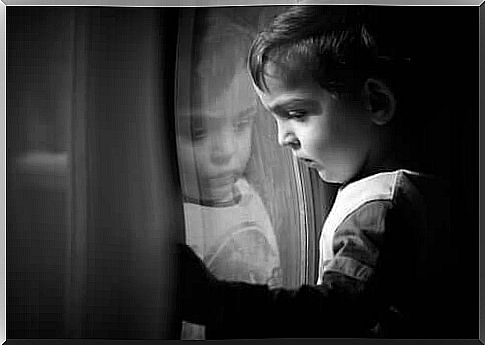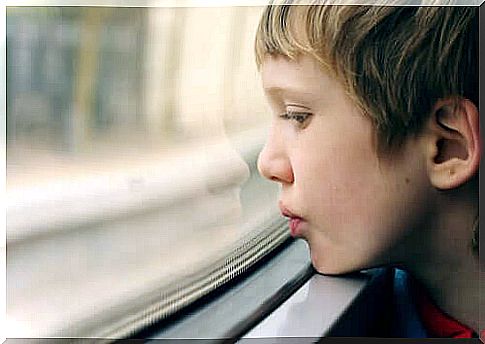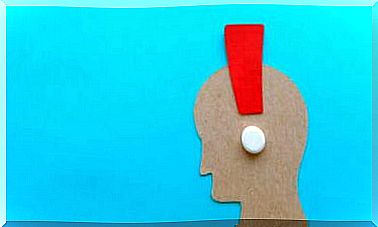The Neurobiology Of Trauma

Currently, child abuse is considered a major public health problem. Therefore, in recent decades, there has been a rapid process in trying to understand the effects of exposure to traumatic experiences on children’s psychopathology (1). But how does trauma neurobiology develop?
In recent years, clinical research has focused on explaining the impact of one-off traumatic incidents and exposure to neglect and chronic abuse. Thus, different studies have shown that isolated traumatic incidents tend to produce conditioned responses to trauma memories.
Meanwhile, chronic abuse or recurrent exposure to traumatic events, such as exposure to repeated medical or surgical procedures, has widespread effects on neurobiological development (1). Apparently, several facts contribute to the extent of psychological damage caused by trauma:
- The age at which children are first traumatized.
- Frequency of traumatic experiences.
- The degree to which caregivers contribute to the event being traumatic.
We know that traumatic experiences can alter brain structures and compromise emotional, cognitive and bodily functions, which weaken patients. However, trauma neurobiology is still poorly understood among specialists, and there are few educational resources available, despite its prevalence (2).
In 2013, the American Psychiatric Association revised the diagnostic criteria for posttraumatic stress disorder (PTSD) in the Diagnostic Manual of Mental Disorders. Thus, the disorder was added to a new category in the manual: trauma and stress-related disorders.

Post Traumatic Stress Disorder
Traumatic events can compromise emotional, cognitive and bodily functions. This causes debilitating symptoms for patients (3, 4) and a diagnosis of PTSD (2). In this way, trauma can occur:
- During a specific event. For example, as a witness to gender-based violence.
- For an extended period, as in the case of child abuse.
When a major stressor occurs, the hippocampus (involved in memory processing) and amygdala (involved in emotion processing) are flooded with stress hormones (3). The individual cannot process the traumatic experience as a finished event (although the threat no longer exists) and memory remains active in the brain (2).
This is why PTSD symptoms can appear long after trauma. In fact, in 25% of cases these symptoms occur late (5).
Trauma neurobiology: affected areas
Trauma-induced neurobiological changes in normal development include areas involved in the regulation of homeostasis. These are (6, 7):
- Brain stem and locus coeruleus (ceruleus).
- Memory systems (including hippocampus, amygdala and frontal cortex).
- The brain areas included in executive functioning:
- Orbitofrontal cortex.
- Cingulate cortex.
- Dorsolateral prefrontal cortex.
- The neuroendocrine system, including:
- The hypothalamic-pituitary-adrenal (HPA) axis.
- Every conceivable neurotransmitter system.
brain stem and midbrain
The systems that deal with threats are the sympathetic and parasympathetic nervous systems, which originate in the brain stem. Thus, early exposure to extreme threats and inadequate care significantly affects the child and, in the long term, the body’s ability to modulate the sympathetic and parasympathetic nervous system in response to stress (16).
Catecholamines
Some studies report that children who suffer from PTSD and who have been abused have significantly higher concentrations of dopamine and norepinephrine than those who have not been abused (18, 19).
Heart rate variability
Children who have suffered trauma have less variability in heart rate compared to healthy individuals (20).
cortisol
Overall (and in contrast to studies with cortisol in adults with PTSD), traumatized children show significantly higher cortisol levels than control groups, who have not previously suffered trauma (21).
limbic system
Research shows that adults who were still affected by trauma and who suffered from PTSD had greater activation of the right amygdala when the trauma was remembered. This activation was accompanied by less activation of the speech center (22).
the hippocampus
People who have suffered trauma and developed PTSD may present in their neurobiology a decrease in the volume of the hippocampus. Thus, Davidson and his collaborators concluded that the impact of hippocampal participation in psychopathology may be most evident in emotional information processing. Children with hippocampal damage would be more likely to show emotional behavior in inappropriate contexts (23).
Other areas affected in trauma are:
- Prefrontal cortex.
- Hemispheric lateralization.
- The cerebellum, corpus callosum and the integration of experiences.
Long-term effects of trauma neurobiology dysregulation
Loss of emotional self-regulation
The inability of emotional self-regulation is characteristic of children who have suffered chronic trauma. Their lack of self-regulatory processes leads to problems with self-definition. Thus, these problems are reflected in (8, 9):
- The lack of a continuous and predictable sense of self, with a sense of separation and changes in body image.
- Poor affect modulation, as well as poor impulse control, including aggression against yourself and others.
- Uncertainty about the trustworthiness and predictability of others, which can lead to mistrust and problems related to intimacy.
learning and memory
Some characteristics of traumatized children are:
- Tendency to hypervigilance: they worry about imminent danger and tend to attack ambiguous stimuli (10). This affects the way they organize their perceptions of the world and is often associated with the development of pervasive problems in learning and academic performance (11).
- Limiting their attention to sources of threat: They may show disinterest in responding to things that other children may find challenging or stimulating.
- Paranoid ideas and perceptions may also arise (12, 13).
Social problems
Children who have been exposed to violence tend to:
- Have difficulty adapting their behavioral arousal to appropriate social demands (14).
- As a result, they are often not in tune with other children. In addition, they can give the feeling of having an intellectual disability in the elementary school years (15).

physical illnesses
Other studies have shown that traumatized children are vulnerable to a variety of physical illnesses. As adults, they are between 10% and 15% more likely to develop cancer, heart disease and diabetes.
During adolescence, they participate in destructive acts against themselves and others. Furthermore, they are approximately 300% more likely to resort to drug abuse, self-harm and violent and aggressive behavior towards others than those who have not suffered trauma (16).
Many children affected by trauma tend to communicate what has happened to them without words, standing before the world as if it were a place full of danger and activating survival-oriented neurobiological systems even when they are safe. Therefore, although children cannot talk about their traumatic experiences, trauma is likely to be expressed as an embodiment of what happened to them.
Therefore, the task of therapy with traumatized children is to help them develop a sense of physical mastery, stimulating an awareness of who they are and what has happened to them. In this way, they will be able to understand what is happening to them in the present and stop recreating the traumatic past in an emotional, behavioral and biological way (1).









